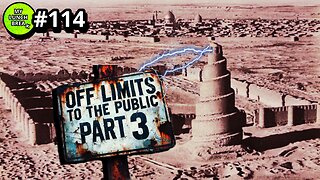The Citizens Ratification Amendment (CRA) represents a thoughtful evolution in the governance of the United States, strengthening the republic by enhancing citizen engagement without shifting to a direct democracy. Unlike direct democracy, where citizens vote on laws directly without intermediary representatives, the CRA does not replace the legislative body or bypass the constitutional structure of governance. Instead, it supplements the existing republican framework by introducing a mechanism for citizen oversight through the ratification process. This allows citizens to have a direct say in the approval or rejection of laws, thus fostering greater accountability and transparency while maintaining the stability and deliberative nature of a representative democracy.
By incorporating the CRA into the governance process, the republic is strengthened in several key ways. First, it ensures that laws reflect the current will and needs of the populace, as citizens can unratify laws that no longer serve the public interest. This dynamic interplay between the legislative actions of elected representatives and the ratification power of the electorate prevents stagnation and encourages continuous alignment of laws with public values and needs. Moreover, it mitigates the risk of a minority imposing laws on an unwilling majority, a common criticism in representative systems where legislators may be out of step with their constituents.
Furthermore, the CRA enhances the legislative process by introducing a layer of direct accountability that compels legislators to consider the long-term acceptability of their laws to the citizens. Knowing that laws can be unratified if they are unpopular or deemed inappropriate ensures that lawmakers are more circumspect in their legislative endeavors. This indirectly leads to higher quality legislation, as laws are likely to be more thoroughly vetted and considered with an eye toward broad acceptability before they are passed. This aspect of the CRA enhances the deliberative quality of the republicâs governance, aligning it more closely with the foundational principles of liberty and justice.
The CRA also contributes to the political stability of the republic. By providing a formal, peaceful, and structured means for expressing dissent about specific laws, it reduces the likelihood of political unrest. Citizens are given a legitimate and effective channel for change, reducing frustration with the political process and increasing engagement. This safety valve for public sentiment fosters a healthier, more resilient political environment where changes in public mood and opinion can be accommodated gradually and constructively without resorting to radical upheavals.
Lastly, the CRA reaffirms the principles of federalism by allowing local jurisdictions to tailor their ratification efforts to the specific needs and desires of their communities. This respect for local differences within the federal framework reinforces the republic's ability to serve a diverse populace with varying needs and priorities. It ensures that the governance remains sensitive to regional issues and maintains a balance between national coherence and local autonomy, crucial for the vast and varied U.S. landscape.
In essence, the CRA fortifies the republic by blending traditional representative governance with a moderated form of citizen participation. This hybrid approach respects the structural integrity and efficiencies of a republic while infusing it with greater democratic responsiveness and accountability. It is a testament to the adaptability of the American political system, demonstrating that it can evolve to meet new challenges without abandoning its core principles.
-
0/2000
-
 17:53
17:53
Forrest Galante
11 hours agoHow I Joined a Dangerous Remote Tribe (feat. Nelk Boys)
48K8 -
 LIVE
LIVE
Vocalot
23 hours agoDay 6! New Here! New Rumble Friends!? 🤙
2,107 watching -
 34:27
34:27
The Connect: With Johnny Mitchell
17 hours ago $12.36 earnedCan He Stop Them? Inside Trumps War On Mexican Drug Cartels & The New Era Of Mexican Organized Crime
31.6K15 -
 2:33:15
2:33:15
Tundra Tactical
9 hours ago $10.90 earnedLuis Valdes Of GOA Joins The Worlds Okayest Firearms Live Stream!!!
33.9K -
 1:03:41
1:03:41
Man in America
17 hours agoAre Trump & Musk the COUNTER-ELITES? w/ Derrick Broze
84.3K44 -
 3:45:08
3:45:08
DLDAfterDark
8 hours ago $10.77 earnedDLD Live! SHTF Handguns! Which Would You Choose?
46K2 -
 1:50:38
1:50:38
Mally_Mouse
11 hours agoSaturday Shenanigans!! - Let's Play: Mario Party Jamboree
55.8K -
 1:13:00
1:13:00
Patriots With Grit
15 hours agoWill Americans Rise Up? | Jeff Calhoun
46.2K13 -
 14:55
14:55
Exploring With Nug
15 hours ago $11.56 earnedWe Found Semi Truck Containers While Searching for Missing Man!
62K9 -
 27:57
27:57
MYLUNCHBREAK CHANNEL PAGE
23 hours agoOff Limits to the Public - Pt 3
142K69

0 Comments